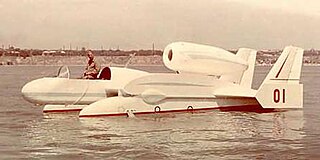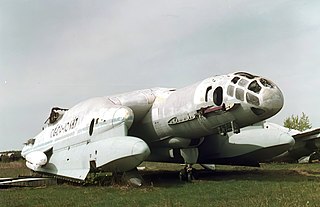 W
WThe Beriev A-40 Albatros is a Soviet/Russian jet engine amphibious aircraft designed by the Beriev Aircraft Company for the anti-submarine warfare role. Intended as a replacement for the Beriev Be-12 amphibian and the land-based Ilyushin Il-38, the project was suspended after only one prototype had been manufactured, with the second one 70% completed, due to the breakup of the Soviet Union. The project was later revived and an order has been placed by the Russian Navy.
 W
WThe Beriev A-50 is a Soviet airborne early warning and control (AEW&C) aircraft based on the Ilyushin Il-76 transport. Developed to replace the Tupolev Tu-126 "Moss", the A-50 first flew in 1978. Its existence was revealed to the Western Bloc in 1980 by Adolf Tolkachev. It entered service in 1984, with about 40 produced by 1992.
 W
WThe Beriev A-60 is a Soviet/Russian airborne laser laboratory aircraft based on the Ilyushin Il-76MD transport.
 W
WThe Beriev A-100 is a Russian-built airborne early warning and control (AEW&C) aircraft based on the Il-76MD-90A transport aircraft. This aircraft is developed to replace the Beriev A-50 in Russian Air Force service. Avionics and configuration will be similar to the A-50U, but with a new Vega Premier Active Phased Array Radar.
 W
WThe Beriev Be-1 was an experimental wing-in-ground-effect aircraft developed in the Soviet Union during the 1960s.
 W
WThe Beriev Be-2 was a two-seat reconnaissance seaplane built for the Soviet Navy shortly before World War II. It was designed to replace the Navy's obsolete license-produced Heinkel He 55 aircraft operating from warships and shore bases.
 W
WThe Beriev Be-4 was a reconnaissance flying boat built to operate from Soviet warships during World War II.
 W
WThe Beriev Be-6 was a flying boat produced by the Soviet Beriev OKB. It was capable of accomplishing a wide variety of missions, such as long-range maritime reconnaissance, coastal and supply line patrols, torpedo/bombing strikes, mine-laying, and transport operations.
 W
WThe Beriev Be-12 Chayka is a Soviet turboprop-powered amphibious aircraft designed for anti-submarine and maritime patrol duties.
 W
WThe Beriev Be-30 is a Russian regional airliner and utility transport aircraft designed by the Beriev Design Bureau. It was developed specifically for Aeroflot local service routes using short, grass airstrips. It was also designed to be used in the light transport, aerial survey and air ambulance roles. It competed against the Antonov An-28 and the Czechoslovakian LET-410.
 W
WThe Beriev Be-103 is an amphibious seaplane designed by the Beriev and constructed by the Komsomolsk-on-Amur Aircraft Production Association (KnAAPO) in Russia. Intended for autonomous operation in the unmarked areas of Russia's far north and Siberia, the Be-103 was designed for short-haul routes in regions that have rivers, lakes and streams, but are otherwise inaccessible.
 W
WThe Beriev Be-112 is a proposed amphibian aircraft with two propeller engines, projected to carry 27 passengers. The Beriev firm currently lacks a production amphibian aircraft in this size.
 W
WThe Beriev Be-200 Altair is a utility amphibious aircraft designed and built by the Beriev Aircraft Company. Marketed as being designed for fire fighting, search and rescue, maritime patrol, cargo, and passenger transportation, it has a capacity of 12,000 litres (3,200 US gal) of water, or up to 72 passengers.
 W
WThe Beriev Be-2500 Neptun is a super heavy amphibious transport aircraft that, as of 2007, was in design and development by Russian design firm Beriev. The maximum takeoff weight is estimated at 2500 tons, hence its name.
 W
WThe Beriev MBR-2 was a Soviet multi-purpose flying boat which entered service with the Soviet Navy in 1935. Out of 1,365 built, 9 were used by foreign countries including Finland and North Korea. In Soviet Union it sometimes carried the nickname of "Kорова" (cow) and "Амбар" (barn).
 W
WThe Bartini Beriev VVA-14 Vertikaľno-Vzletayushchaya Amfibiya was a wing-in-ground-effect aircraft developed in the Soviet Union during the early 1970s. Designed to be able to take off from the water and fly at high speed over long distances, it was to make true flights at high altitude, but also have the capability of flying efficiently just above the sea surface, using aerodynamic ground effect. The VVA-14 was designed by Italian-born designer Robert Bartini in answer to a perceived requirement to destroy United States Navy Polaris missile submarines. The final aircraft was retired in 1987.